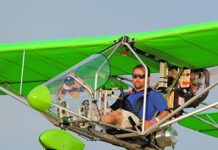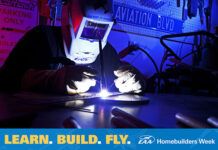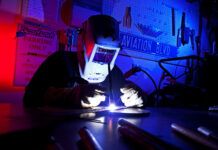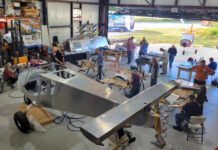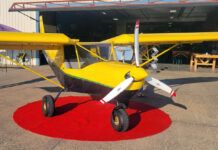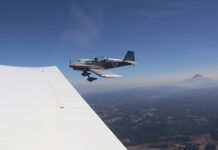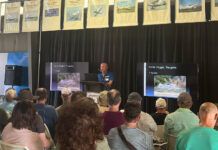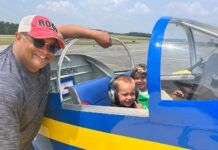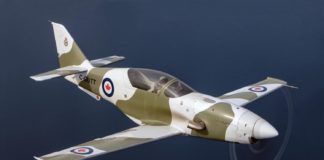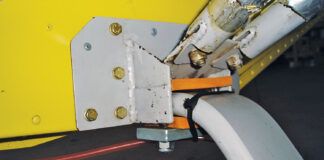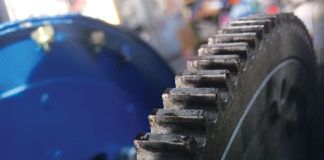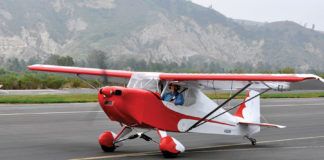I’ve had a number of readers ask me if I managed to make it to the Stearman National Convention, and I’m happy to report I did! As a matter of fact, I had so much fun that I thought I would share some of the experience with you. Truth be told, in 42+ years of flying, I found it to be the most enjoyable week of aviation that I have ever had! That really says a lot since I have been going to most of the major EAA and local fly-ins in some sort of homebuilt aircraft since 1981, and it’s certainly not that I haven’t been having a great time at those events. There were some different things at this event that I think made it special, as well as got me thinking about how we could transfer some of it to the Experimental world of fly-ins.
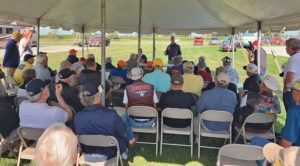
It was about a 7.5-hour trip from Atlanta to Galesburg, Illinois, with two fuel stops, including lunch. The Stearman was not meant to be a cross-country airplane, so poor weather, and especially winds, can really wreak havoc on a schedule. We were really lucky in that the whole day had pretty much clear skies and light winds, and I felt good about traveling in the company of two other Stearmans, having just had the engine failure a couple of months earlier. All three Stearmans performed flawlessly, and we arrived there in the late afternoon.
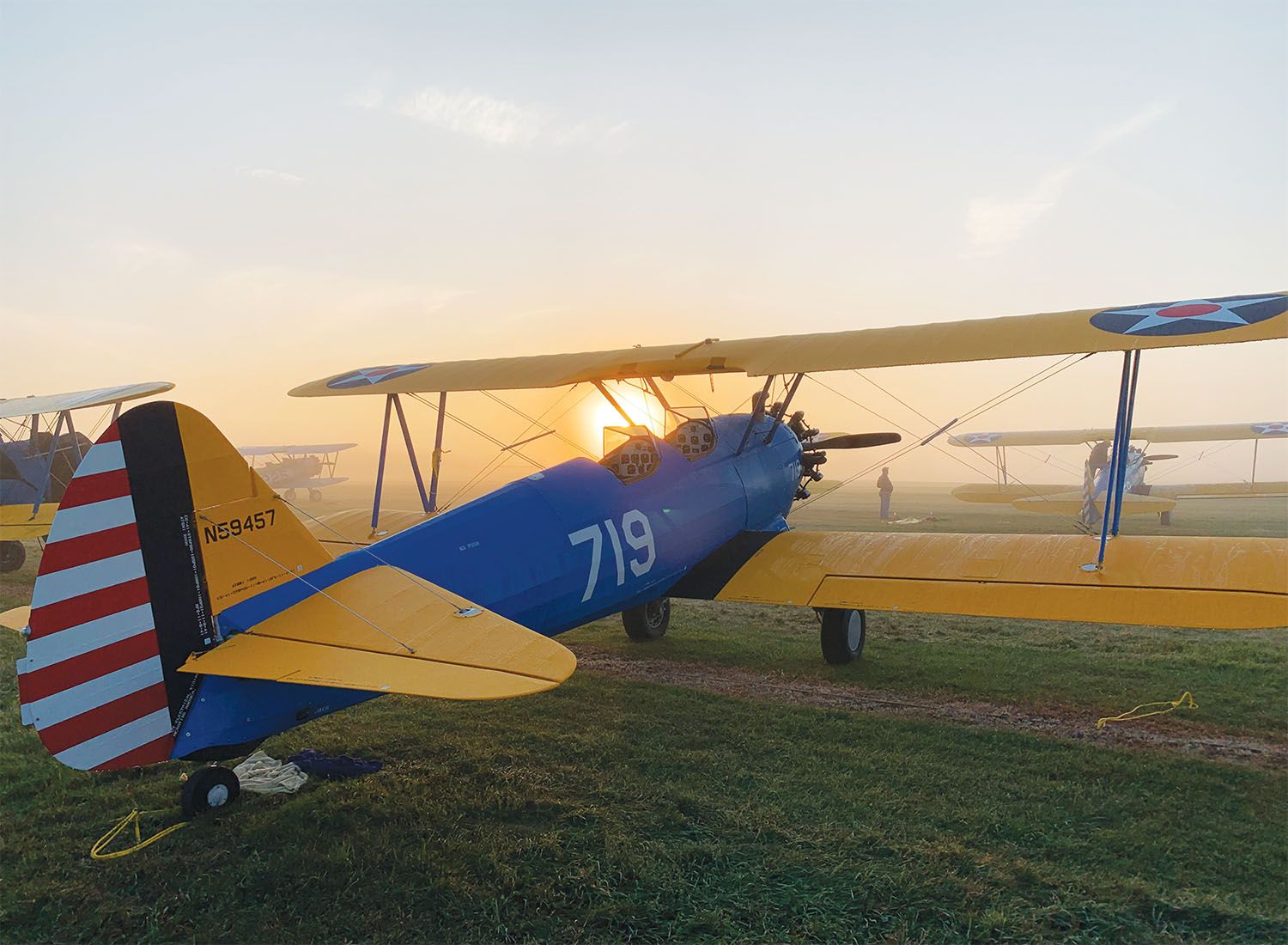
A Different Fly-In Experience
The next eight days were extremely fascinating to me. My experience at all of the homebuilt fly-ins was that once we arrived, we usually tied the airplane down, and rarely did it move until it was time to go home. Sometimes there would be events to participate in, like Homebuilt Review or formations at OSH, but mostly it was sit around talking, attend seminars, or as in the past few years, do a lot of presenting and attending meetings. Not so at Galesburg. Most of us flew four to six times per day, and all of my flying except two flights was in two-, three-, and four-ship formations! Lots of free rides were given; I even flew a couple of Young Eagles one day. I called home one day and told my wife that the Stearmans seemed like gnats, as they were everywhere all day long. It was constant radial engine noise until sunset. Total attendance peaked at around 80 Stearmans, of which no two were alike, not unlike our homebuilt fly-ins.
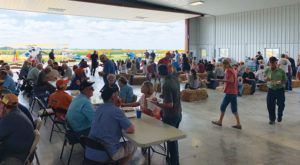
The really cool thing was that every day of the week there was a fly-out to lunch at either an airport that was hosting the Stearmans or to one of the local farmers’ grass strip. The food provided by the farmers was fantastic, and yes it was even free! Seeing 50–60 Stearmans in one place, with many of them in formations, was really cool. By the way, the radio discipline was fantastic as well, as most of the formations never even used the radio for their entire trip except to announce a location. One farmer even had a local ATC controller on the radio! Oh yes, many of the Stearmans didn’t have a radio, but I never saw or heard of any conflicts. I know it would be impossible to have these fly-outs during AirVenture or Sun ’n Fun, but perhaps the regional and local fly-ins should start thinking about this. At each of these locations, all of the locals were invited as well, so the turnout was quite huge, and the pilots and their airplanes were really great ambassadors for general aviation.
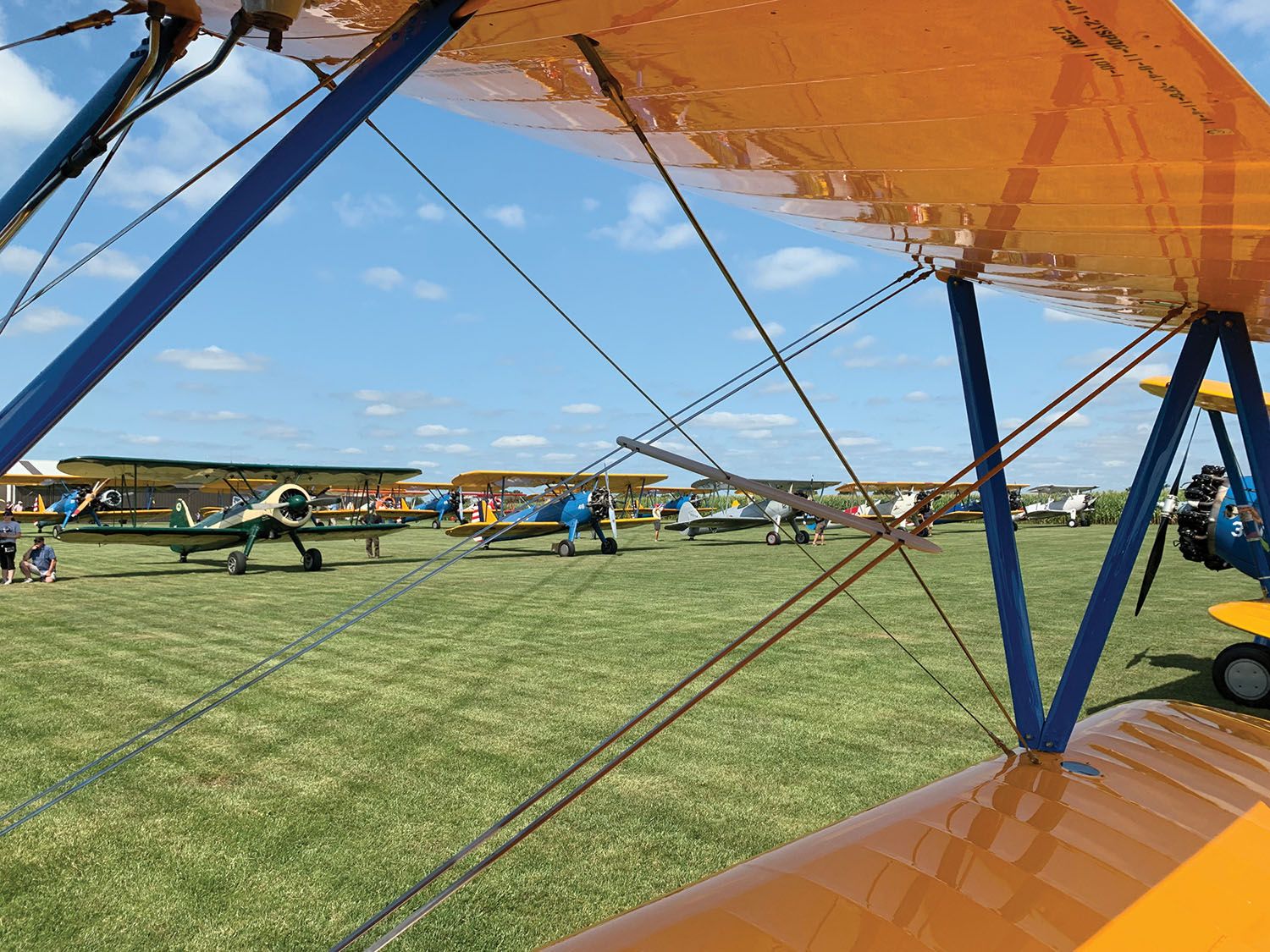
Here’s a really cool story to drive the point home. One of the fly-outs was to a farm owned by the Wolfords, the first registered private runway in Illinois. During one of the conventions about 31 years ago, three Stearmans and a Piper Cub were buzzing around when they stumbled onto the strip and voted which pilot would have to land and see if the farmer was friendly enough to allow them to practice for the aerobatic competition over his place. A farmer was working under the combine and didn’t hear the Stearman land, but of course he was OK with it, and the next year they were invited back and they brought a few friends…who brought more friends. The three kids (Phillip, Matt, and Daniel) liked it so much that all sold sweet corn over the years to help fund the event, with mom and dad helping to cover the food expense. Currently, Phillip and Matt are both partners in the local FBO, Jet Air, Inc. At one time, each of the kids managed a different Jet Air location at Galesburg; Burlington, Iowa; and Iowa City, Iowa, and now Daniel flies for John Deere. They are all superpolite and very passionate about aviation.
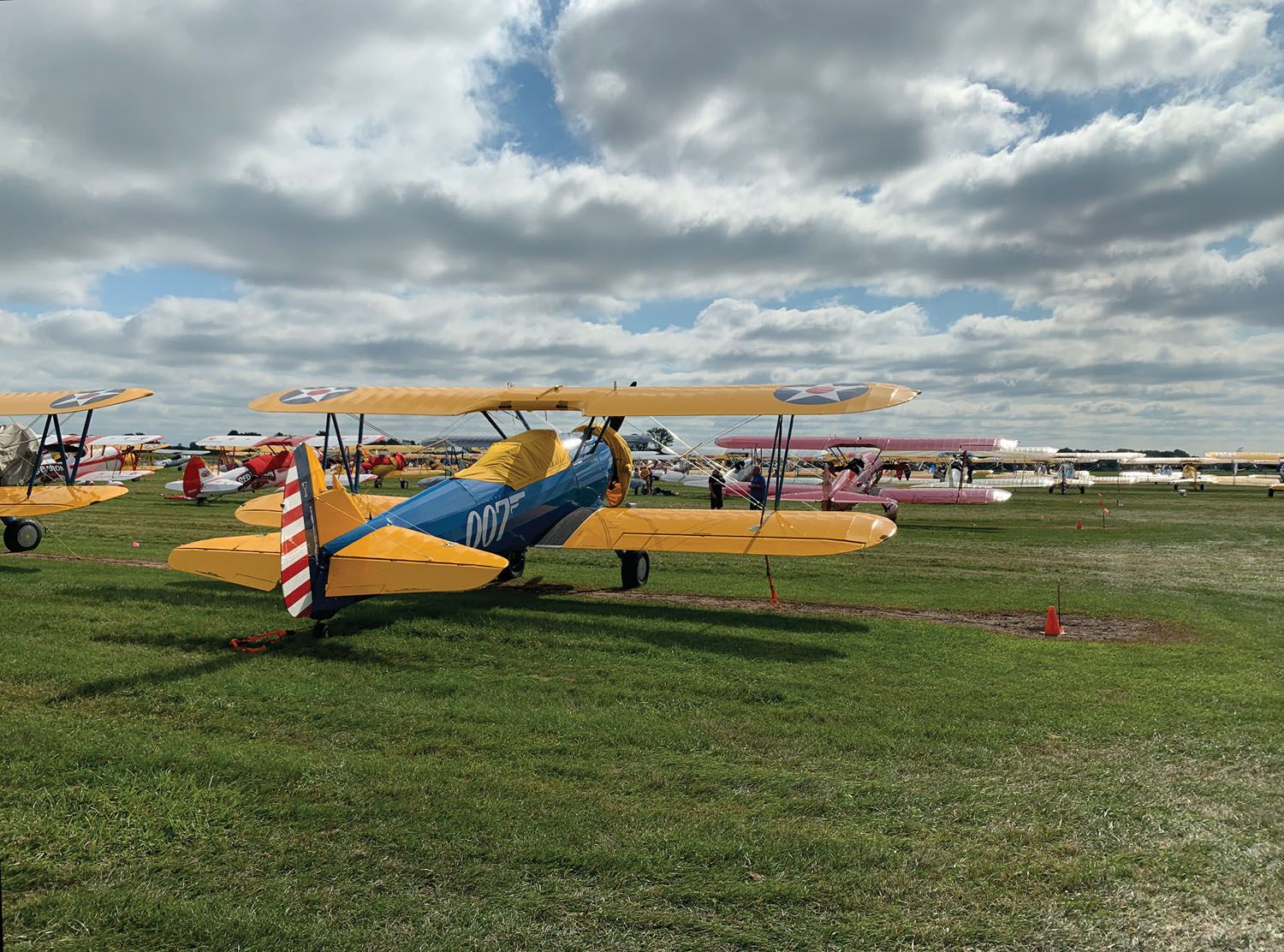
Keepin’ It Safe
You would think with that many daily operations of so many vintage aircraft, in such a confined area and at the same time, there would be some problems. But during the week, only one Stearman had an excursion into the bean field on the side of the runway, with no aircraft damage incurred.
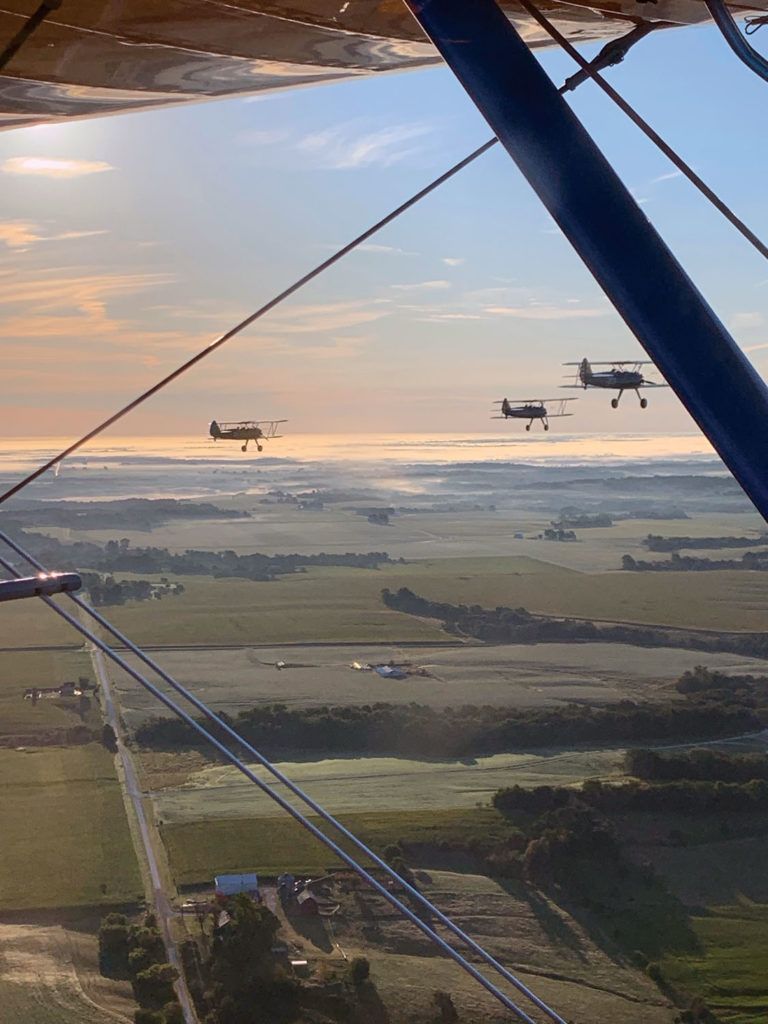
Here are some things I think made it such an exciting and safe event: Every day began with a safety briefing by the president of the Stearman Restorers Association, Mike Rutledge (a former Navy Seal and Army helicopter pilot). Conditions and recommended operations for all of the intended airports were briefed. The briefing always ended with a safety tidbit, which was usually a lesson learned from one of the pilots. Even the bean-field-excursion pilot got up and talked about the events leading up to his off-runway incident, and as usual there were a few bells going off in his head that could have prevented it. I found it really noble that pilots got up and shared their mistakes with other pilots, without prompting and without any heckling. It was aviation accident prevention at its finest.
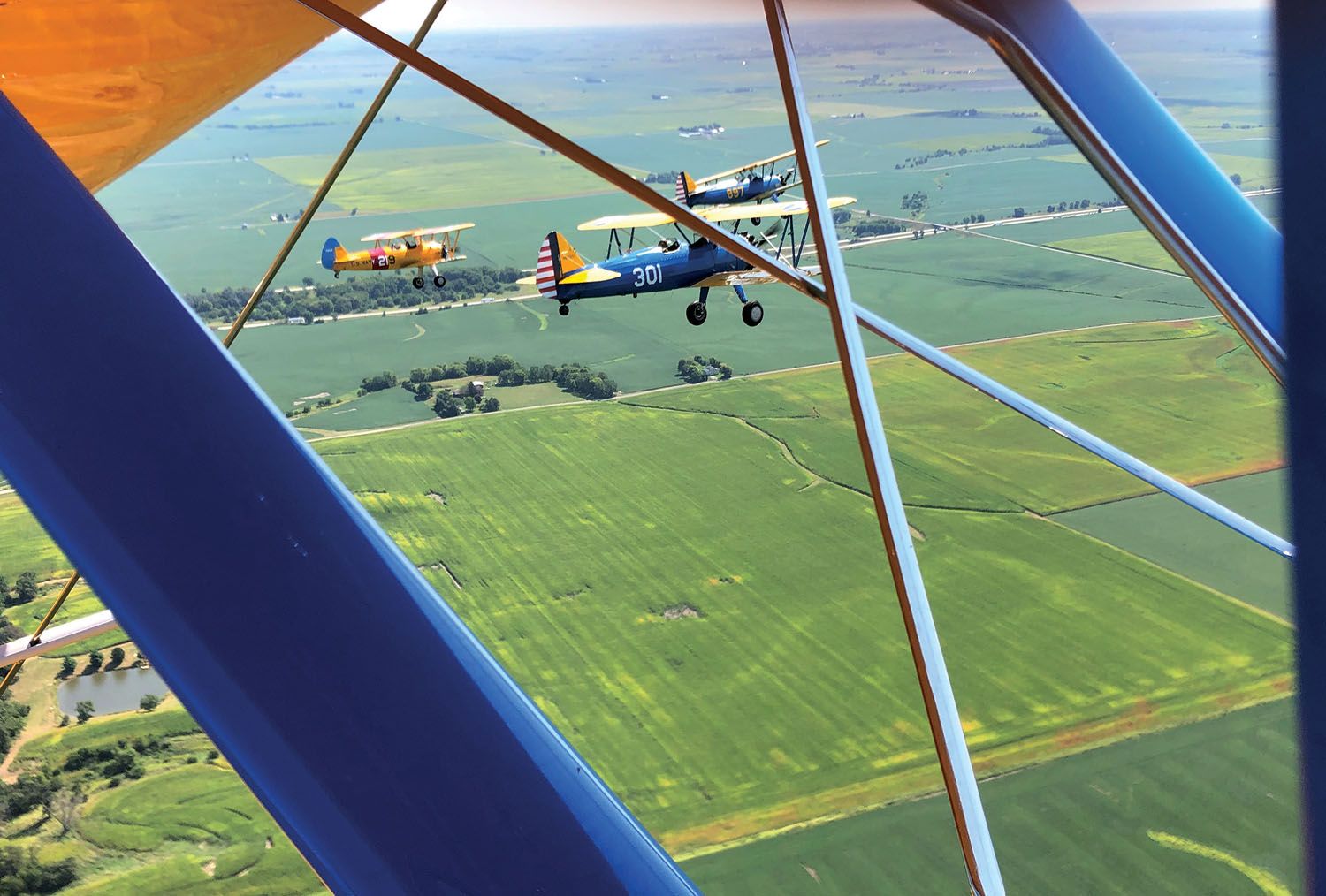
During the day, you could see multiple groups of pilots standing by their airplanes going through the briefings prior to flight. It was also very common for pilots to check another pilot’s airplane prior to movement. Admittedly, even I benefitted one day, as I was already strapped in the cockpit when another pilot asked me if I would like my tail tie-down removed. Touché! It was the first day, and the grass was still tall, hiding the tie-down. At least that’s my story and I’m sticking to it.
Another practice I really liked, and I know some might have heartburn with this, is that the parking area for the airplanes was very controlled. The general public was not permitted in the area except on trams. The trams carried people all day long up and down through the 8–10 rows of Stearman parking, but they had to remain on board. There was an audiotape that played the history of the Stearmans while they were riding. Personally, I thought it contributed immensely to flight-line safety, as we didn’t have to worry about non-pilots being in the area when we were taxiing (the Stearman pilot is completely blind to the area in front of the aircraft unless doing S-turns, which was not possible in the parking rows). Also, we did not have to worry about damage to the aircraft caused by people unfamiliar with the fragility of fabric-covered aircraft.

The last day had some competitive events for the pilots, including a short takeoff, flour bomb, spot landing contest, and formation contest. I flew as number 4 with a team known as the Scorpions, and we won. How cool is that?
All too soon, it seems like fun comes to an end. I really needed to get back to the hangar for work Monday, so I headed back solo on Saturday after the formation contest. Great trip home! Over 37 hours of flying in a week, and of course the Stearman was the dirtiest I’ve ever seen it. Lucky for me, Carol cleaned it Monday when I went to work. How lucky am I?
Back at the Shop
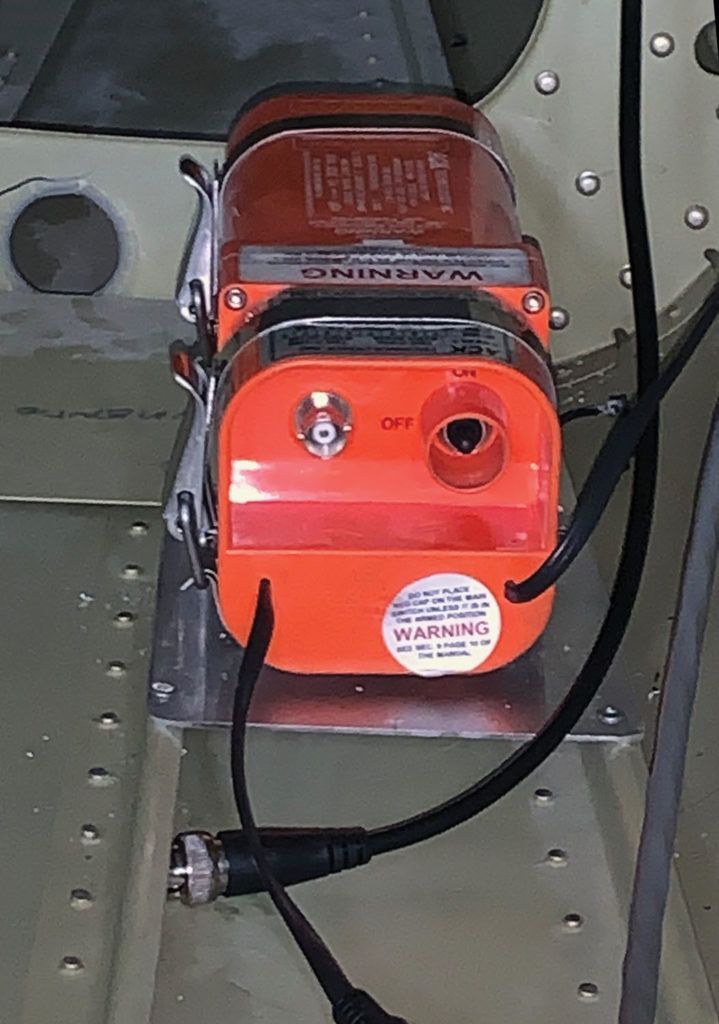
With six or seven airplanes per week going through the shop now, it is really easy to see some common things that could use some attention in the field. Guess what? I’m not going to mention jam nuts! The big culprit these days seems to be the ELT. In the last month alone, I have found almost a half dozen with various problems. First, it seems way too many people don’t understand that the ELT needs to be checked annually and an entry placed in the aircraft logbook. Some of the newer ELTs recommend a three-month check. By the way, it also helps to connect the cables back up after replacing the battery. Yep, I have found two in the last quarter that did not have the antenna or control cable installed. Also, the control panel in the instrument panel has a battery in it that needs replacing. Too many people aren’t even aware of that one, and I have found a few inoperative control panels that were caused by old, corroded batteries. On a funny side note, the last ELT I installed was delivered in a box that was labeled “Lithium batteries…Do not ship by air.” Hmm.
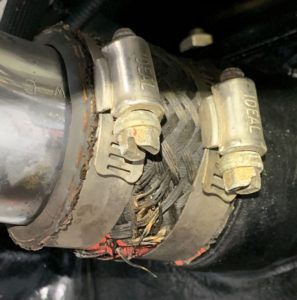
The next two culprits I am seeing have to do with aging aircraft and people just not understanding how age and heat can cause some problems to slowly creep up. Intake gaskets and intake hoses really take a beating in the engine compartment, and they really should be looked at and considered for replacement between 400–500 hours, and sometimes sooner. The intake hoses are very close to the exhaust tubes in many aircraft and can really get hard in a very short time. The main symptom is usually hard starting, especially with carb’d engines, and everyone usually chases after the spark plugs and ignition systems first.
Air filters also need regular TLC. They shrink and harden with age. I’ve seen way too many 8- to 10-year-old airplanes that have the same filter in them. Most of them are so shrunken they are not doing any filtering at all.
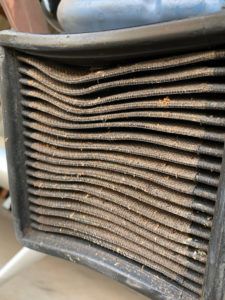
Since we can’t fly all of the time, I recommend you consider taking a look at your own airplane for items that might have aged. Set up a schedule over the course of the next year, and take the time to inspect and replace them if necessary. You might be surprised at some of the performance increases you could see!
While you’re at it, think about some local fly-in you participate in, and see if you can increase the fun factor!

